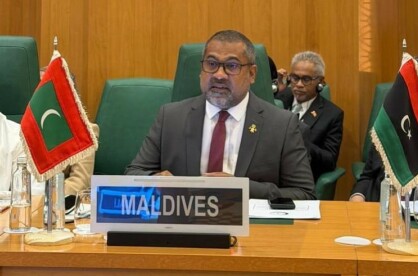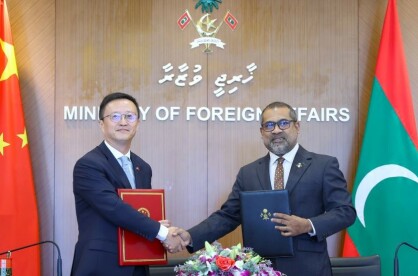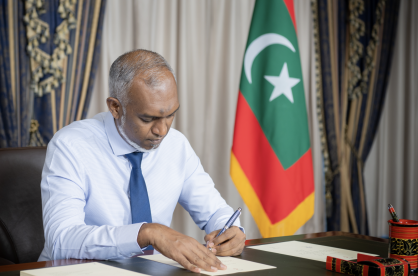The Integrated National Public Ferry Network
A reliable network will undoubtedly revolutionise the nation's development and make significant positive impacts on lives.

A reliable network will undoubtedly revolutionise the nation's development and make significant positive impacts on lives.

Every administration needs to do a once-over to assess the current state of the infrastructure, what needs to be overhauled, what needs to be improved, and to see where newer technology can be implemented, to ensure healthy growth of both society and economy. In the case of the Maldives, the administration’s Strategic Action Plan aims to assess these shortcomings and remedy them, and outline how to develop existing systems further. This includes the connectivity issue in an island nation such as the Maldives.
For a short overview of the current situation, it is helpful to look at some recent statistics and numbers. In a nation of 1,192 islands divided by ocean across 21 administrative atolls, with a highly centralised infrastructure where the capital city is the crux of all basic necessities, connectivity is paramount. The main mode of transport between islands, especially for the locals, is over water. While there are 13 domestic airports and five international ones in operation across the nation, it is still not enough to provide the necessary accessibility for the public. Even the Asian Development Bank had pointed out that lack of connectivity is the largest hindrance for the development of the Maldives.
Even though over 200,000 travellers passed through the airports in December of 2019 alone, the situation is not optimal nor is it close to being so. The largely centralised system has been an obstacle in promoting air travel opportunities between regions, and the lack of a proper, revised assessment of the zones in the Maldives plays a part. Seaplane travel is almost exclusively for hotel transfers, and the disconnect between different systems of travel also further exacerbates the problem.
There has been attempts at developing privatised ferry systems in the Maldives before, including the Integrated Transport Network launched in 2009, all of which had failed and left both government majority owned companies, MPL and MTCC, managing what could be called a public ferry service. These services, while at affordable rates, still left a lot to be desired, allowing private entrepreneurs to target the niche in the transport market. Multiple speed boat companies owned by private individuals fill in the lacuna left by the outdated government service, as some ferry transfers carry both passengers and cargo, raising safety concerns. However, as seen from the most recent, tragic accidents, it seems that the private industry also leaves much to be desired in the safety department.
A more sever overhaul is not possible because the services are both highly expensive in operational costs, and the services are nigh crucial for the pubic, so any interruptions would cause quite the inconvenience. On top of that, the market is not as lucrative, as large distances, small populations, low cargo volumes, and high operational costs still have a hand in the whole matter.
To alleviate this issue, the government proposes the Integrated National Public Ferry Network, an ambitious project developed by the Ministry of National Planning, Housing & Infrastructure, to redefine connectivity within the Maldives. The project is currently in the draft stages, yet there are many changes and adjustments to the current system in addition to developing newer concepts to keep up with the changing socio economic requirements. Decentralisation is the key approach, truly understanding what it means to provide full and convenient access to all necessary services and resources.
While the technical aspects of this project are still under development, the concept is important to understand. The five key components that make up this project include:
Some of the key outcomes of this project of note are those that align with sustainable development goals as well as environment sustainability. There is much attention paid to developing systems that are efficient in energy consumption and implementation. Reducing the overall cost of transportation in hopes of promoting SME development, and also improving the efficiency in the provision of goods and services are also paramount outcomes for this project.
Additionally, the project aims to overhaul the existing standard practices of maritime services in numerous aspects. Both passenger ferry as well as cargo shipping services are to be reset to a higher standard in all aspects of the journey and the service. This includes the development of current maritime infrastructure, such as ports and piers, under the headline of improved health and safety standards, as well as improving and implementing state of the art seafaring devices. These standards are also levied upon captains and crews, to ensure a nationwide operating procedure is understood and implemented.
Improving the frequency and efficiency of the service is subject to a standard as well. This includes developing standards for stopovers, for passenger/cargo unloading and loading, with a twelve-hour, daytime only operating rule. A minimum speed is to be implemented as well, which thankfully exceed the snail’s pace of existing ferry services. The main aim includes catering for commuters, with standards of comfort and efficiency to allow a dependance to be based on these services.
Customer service would also jump ahead by miles, as the project proposes developing a more automated ticketing and payment system. Fuel efficiency, as mentioned previously, is a key requirement in all vessels, and on top of that, a centralised, real-time monitoring system is to be integrated to ensure both the environment and the passengers get the consideration they deserve.
The same standards apply generally to the proposed cargo networks as well, and are directed with the overarching concepts of efficiency, frequency, safety, and seamless integration. Cargo transportation gets further personnel safety standards imposed as well, when involved in the handling of dangerous, chemical, and medical cargo. Further standardisation on addressing and documentation of cargo would ensure the service is prepared to handle all volumes of cargo movement within standards of operation, and develop further cargo transport infrastructure throughout the country.
Such a bold move would depend greatly on market research and assessment, and adequate financing — the idea is still on the drawing boards and boardrooms. However, given the recent, as well as historical, tragedies that have befallen the people in seafaring accidents, and the inefficiency in transport hindering local business ventures and health service provisions, this project comes at an opportune time.



